|
Family: Balaenopteridae (rorquals)
Life
>
Eukaryotes >
Opisthokonta >
Metazoa (animals) > Bilateria > Deuterostomia >
Chordata > Craniata > Vertebrata (vertebrates) >
Gnathostomata (jawed vertebrates) > Teleostomi (teleost
fish) > Osteichthyes (bony fish) > Class:
Sarcopterygii (lobe-finned fish) > Stegocephalia
(terrestrial vertebrates) > Reptiliomorpha > Amniota >
Synapsida (mammal-like reptiles) > Therapsida > Theriodontia
> Cynodontia > Mammalia (mammals)
> Placentalia (placental mammals) >
Laurasiatheria > Ferungulata > Cetartiodactyla (even-toed ungulates and
cetaceans) > Whippomorpha > Cetacea (whales, dolphins and
porpoises)
Species indigenous to southern Africa
|
Megaptera
novaeangliae (Humpback whale) Humpback whales may be
spotted from the shore off the Northern Kwazulu-Natal coastline. The
population whose migratory route passes close inshore of the northerly South
African east coast was decimated by whaling operations, that thankfully
ceased in the 1960ís. Studies by South African researchers show that the
population has since increased substantially. Humpbacks apparently produce the longest and most varied songs in
the animal world, that range from high frequency whistles to low
rumbles. |
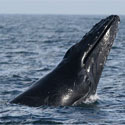 |
|
Balaenoptera bonaerensis
(Antarctic minke whale) Minke’s are medium sized baleen whales of about
8 metres in length and weighing in between 5 800 and 7 200
kilograms. It has a small dorsal fin situated towards the tail,
throat grooves and is bluish grey in colour, again, with the colour
becoming lighter towards the underside. They have an indistinct,
fuzzy blow. |
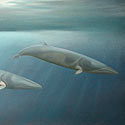 |
|
Balaenoptera acutorostrata (Dwarf minke whale) |
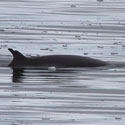 |
|
Balaenoptera borealis (Sei whale) The Sei
whale is a large whale averaging 15 metres in length and weighs
around 14 000 kilograms. It is a filter feeding baleen whale of a
dark grey colour. |
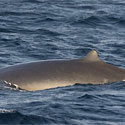 |
|
Balaenoptera edeni
(Bryde's whale) This is a large filter feeding whale of about
12 metres in length and with an average weight of 12 000kilograms.
Itís skull is broad and flat. It has a small dorsal fin and is
bluish grey in colour. |
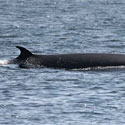 |
|
Balaenoptera
musculus (Blue whale) The Blue Whale is the largest animal ever to
have existed or to exist. A Blue Whale averages 25 metres in length,
with a maximum recorded length of 31 metres. Their average weight is
between 80 and 130 thousand kilograms, with a recorded maximum
weight of 178 thousand kilograms. They are huge streamlined animals
with a tiny dorsal fin of around 30 centimetres high and with their
head consiting of about 25% of their body length. |
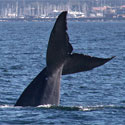 |
|
Balaenoptera
physalus (Fin whale) These are large baleen whales of some 21 metres
in length and weighing in at between 35 to 40 thousand kilograms.
They have deep grooves in the throat, a dorsal fin situated towards
the tail, and a sleek overall shape. Their bodies are of a dark grey
and umber brown colour, that lightens towards the belly. They have
unique asymmetrical colouring on their heads, which may be related
to feeding habits. Their blow is a single thin column between 6 and
12 metres high. |
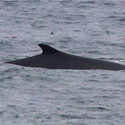 |
|
